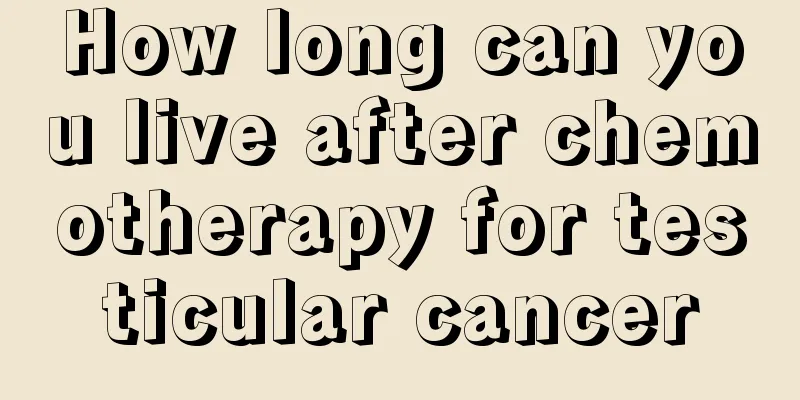How to treat glioma

|
Glioma (glioma of the brain cell) accounts for about 46% of intracranial tumors. It has the highest incidence rate, and the peak age of onset is 30-40 years old, or 10-20 years old. Therefore, once discovered, we must treat it in time. How to treat glioma? Let's take a look at these treatment methods. 1. Surgery The principle is to remove the tumor as much as possible while preserving neurological function. Early stage tumors that are small should be completely removed. For larger tumors located in the frontal lobe or the anterior part of the temporal lobe, lobectomy can be performed to remove the tumor together. Hemispherectomy can also be performed for tumors that involve more than two lobes of the cerebral hemisphere and cause hemiplegia but have not invaded the basal ganglia, thalamus, and the contralateral side. For patients with tumors located in the motor and speech areas without obvious hemiplegia or aphasia, attention should be paid to maintaining neurological function and appropriately removing the tumor to avoid serious sequelae. Decompression surgery under the temporalis muscle or craniectomy can be performed at the same time. Decompression surgery can also be performed only after biopsy. For patients with thalamic tumors compressing and blocking the third ventricle, shunt surgery can be performed, otherwise decompression surgery can also be performed. For ventricular tumors, the brain tissue can be cut from non-important functional areas to enter the ventricles according to their location, and the tumor can be removed as much as possible to relieve ventricular obstruction. Care should be taken to avoid damaging the hypothalamus or brainstem adjacent to the tumor to prevent danger. In addition to small nodular or cystic brainstem tumors that can be removed, shunt surgery can be performed for those with increased intracranial pressure. For patients with critical conditions, dehydration drugs should be given first, and examinations and diagnosis should be performed as soon as possible, followed by surgical treatment. For posterior cranial fossa tumors, ventricular drainage can be performed first, and then surgical treatment can be performed after the condition improves and stabilizes. 2. Radiation therapy The sensitivity of various types of gliomas to radiotherapy varies. It is generally believed that poorly differentiated tumors are more sensitive than well-differentiated ones. Medulloblastoma is the most sensitive to radiotherapy, followed by ependymoblastoma. Glioblastoma multiforme is only moderately sensitive, and astrocytoma, oligodendroglioma, pinealoma, etc. are even worse. For medulloblastoma and ependymoma, because they are easy to spread with cerebrospinal fluid, full spinal canal irradiation should be included. 3. Chemotherapy Highly lipid-soluble chemotherapy drugs that can pass through the blood-brain barrier are suitable for brain gliomas. The drugs selected should still be mainly lipid-soluble. Gliomas can be treated with different treatments depending on the severity of the disease. In addition, you should also maintain a good attitude, because a good attitude is also the key to treating the disease. |
<<: The most common treatment for glioma
>>: How is glioma generally treated?
Recommend
What are the precautions for preventing lung cancer? Here are six tips to effectively prevent lung cancer
What are the precautions for preventing lung canc...
Right chest tightness and phlegm
Whether it is the right chest or the left chest, ...
What are the methods for preserving crabs?
In life, people always like to eat some delicious...
Is the widening of the hyaluronic acid rhinoplasty a sequela and harm?
Having a high nose bridge is everyone's dream...
Differential diagnosis of rectal cancer
Health is everyone's wealth, and everyone des...
Are the symptoms of rotavirus obvious?
Rotavirus is actually a very common virus in our ...
What is normal blood pressure at the age of 55
Blood pressure is an important indicator for peop...
The relationship between lung cancer and smoking
Over the past half century, a large number of epi...
Don't do five things that are harmful to your body in bed
Nowadays, the pressure of life is getting higher ...
How long does it take to brush your teeth
When brushing your teeth, in addition to brushing...
Pain in the inner calf bones when running
Running is an aerobic exercise that many people l...
Is homemade apple cider vinegar harmful?
With the improvement of living standards, many pe...
What should you pay attention to in your diet for bladder cancer?
Bladder cancer ranks eighth among the top ten mal...
What are the wonderful uses of tofu dregs
Nowadays, many families are equipped with soy mil...
Don't disbelieve it! Liquor + beer = suicide!
Many people have had similar experiences. Normall...









